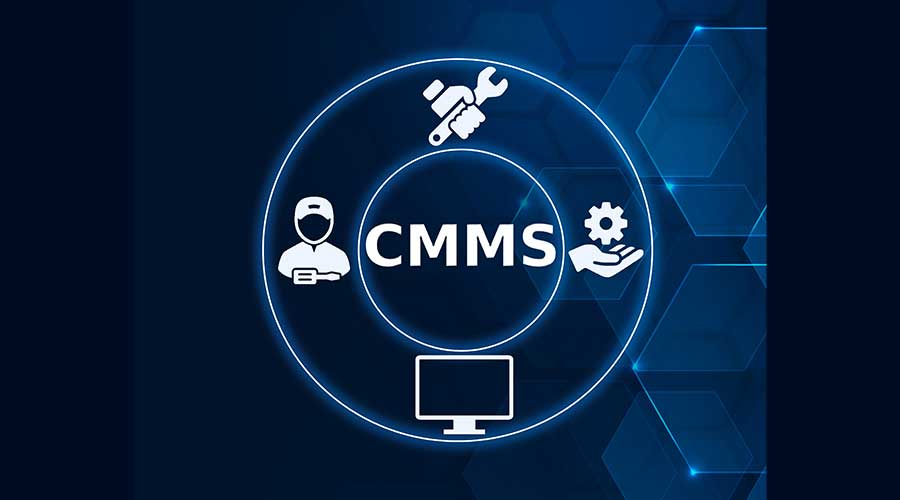Auditing for CMMS Success
A comprehensive audit of the work order process can help managers build a case for new or upgraded software
Maintenance and engineering managers often consider upgrading a computerized maintenance management system (CMMS) for a number of reasons. They hope it will help control costs, increase productivity, and monitor and improve overall department performance.
While a CMMS upgrade can help departments achieve these goals, it can only do so if a manager does the legwork ahead of time and identifies the goals of an upgrade and the resources to make it happen.
The most important step in the upgrade process might be an audit of maintenance department operations, with a focus on how the department handles work orders, the backbone of any CMMS. Observations based on audits performed on a range of facilities reveals how audits can form the basis of an CMMS upgrade.
Work Orders: A Closer Look
Critical in evaluating the maintenance process is the progression of a work order.
Planning work orders. Planning work orders generally follows a standard path, regardless of the type of enterprise. The person who detects the need for maintenance service requests the most routine service. If the request is written, the maintenance shop receives the approved request for further maintenance approvals and prioritizing. Without a written request, a valuable source of analyzing equipment failure causes is lost.
Various communications follow, sometimes requiring input from several parties. There are many ways to perform a given repair, and each alternative calls for different methods, parts and costs. Also, opinions vary widely about priority, so at this stage, a maintenance supervisor or worker familiar with the equipment often makes a field check to evaluate the work needed and identify the best repair method.
Once a method is approved, the manager decides on priority, safety needs, permits, tools, equipment and material. After all job elements are informally defined, the manager determines the crew size, trades or skills and estimates the job time. The work order then is entered into the ready-to-work backlog for assignment, by priority, to a maintenance worker.
Scheduling, assigning and completing work orders. The next step is to schedule the job based on priority, assigning as much as a week’s work to one individual according to the skill required and crew member’s experience. After assignment, the individual decides the order in which to do the jobs, and the work is performed. The supervisor’s follow-up to determine completeness and quality generally is limited, and the requester seldom is notified that the work is done unless the job was urgent. The worker reports the time and work performed. This information too often is inaccurate or incomplete, and the clerk posts this suspect labor and material information on the equipment record. Finally, the work order is closed and removed from the backlog.
Measuring results. Few departments measure results. Various control reports and trend charts that managers use to track performance and identify needed corrective action generally are not available, or they are used infrequently because managers know the information is unreliable. Key report control indicators including performance, coverage, delays and cost per standard hour produced might be unavailable.
How an Audit Works
The goal of many audits is to lay the groundwork for a CMMS upgrade, but whether organizations have a manual system or CMMS, they often are challenged by the rush of day-to-day events to maximize their resources. Organizations usually add equipment to the physical plants, and even though it typically is more complex than previous equipment, they still have the same labor resources, or even fewer, to maintain it.
The dynamic nature of business operations and the continuous challenge to keep costs down makes periodic audits a necessity if the businesses are to succeed. Two major steps comprise the audit procedure. The first step is establishing a base line, and the second is comparing subsequent audits to the base line to measure improvement.
The base line. To control an activity, managers must measure it against some yardstick. That yardstick in maintenance management is the body of knowledge, gathered through experimentation and hands-on management experience, about what makes a superior program.
Building a base line means examining the maintenance planning, scheduling and control system and subjecting it to scrutiny. The answers are converted into quantitative measurements of the system’s status at any point in time.
In effect, managers should prepare a balance sheet showing the system’s strengths and weaknesses. Then the strengths are continued, and the weaknesses are analyzed to establish actions for improvement. Managers implement the improvements according to priorities determined as a part of the evaluation process:
- What actions would produce the most payback most quickly?
- What critical equipment would benefit the organization the most?
- How should the problem be approached?
- What alternatives are there, and which one is best?
- How will the success of the intended improvement be measured? Less downtime? More reliability or quality? Less rework? Less overtime? Lower cost? Better customer service?
Most often, the improvement alternative selected offers a broad combination of these benefits, and for this reason, it is the one implemented.
Annual evaluation and comparison with the base line. One measurement is not enough to stay on top of the constantly changing situation. Conditions and priorities change over time and need to be reevaluated.
Often, the first survey or evaluation finds a lack of management controls, so improved time reporting, a planner function and maintenance method, and time standards are instituted. Regular daily or weekly reports are implemented to enhance maintenance supervisor’s control. Such reports prove to be very effective for day-to-day control.
The department immediately sees substantial improvement, but over time, improvement might fall short of the original performance goals. For long-range improvement, an in-depth audit at least annually is required to continue the improvement and ensure the program meets the test of time.
Audit Results
Often, the results of the audit and corrective action initially increase the known backlog of work. Actually, the backlog was always there, but it was hidden because it was not well documented. This hidden backlog represents a large amount of deferred maintenance work, which is the cause of an equally large amount of breakdowns, rework, unscheduled downtime and quality problems.
But as workers perform more frequent inspections and managers introduce better preventive maintenance coverage of important equipment and facilities, breakdowns and quality problems decline. Scheduled downtime tends to be far less than previously.
Also, as managers schedule planned preventive maintenance windows to allow time for inspections, predictive and preventive maintenance of equipment, organizations tend to experience greater overall equipment and facility reliability, greater customer satisfaction, and higher profitability.
Additional Audit Benefits
As maintenance and engineering managers see the initial results — the benefits of investing in maintenance — and communicate this information, they also tend to get and retain the support of higher management. Also, a continuous, fresh source of new improvement projects present themselves from the inspections and preventive maintenance routines.
The flow of new improvement ideas continue as higher levels of control and savings are achieved. In turn, these savings can help finance future improvements, further enhancing the audit, planning, scheduling and control cycle and ensuring a steady flow of better methods, savings and a more reliable, safer and lower cost physical plant.
The audit process frequently shows that if maintenance had been neglected for a long period if time, no amount of preventive maintenance seems to reduce breakdowns or other equipment-related problems. Also, another indicator of long-deferred maintenance is that equipment failure causes are different every day. Many components on equipment can fail at the same time, making failure analysis difficult or even impossible.
Often, when the audits first start, managers are able to identify many of the results of low maintenance levels. And as the audits continue, workers can identify small problems earlier and correct them.
As equipment costs have increased over the years, reliability has become even more important. Audits identify more applications for predictive maintenance. By making small improvements in PM routes to include vibration, infrared or oil analysis checks, technicians can predict future problems and perform minor repairs before failure occurs.
Most importantly, the process reveals weaknesses in the way the department handles of work orders and gathers data on maintenance activities.
Armed with this knowledge, managers can more effectively specify a CMMS that builds on department strengths and helps remedy its problems.
Related Topics:











